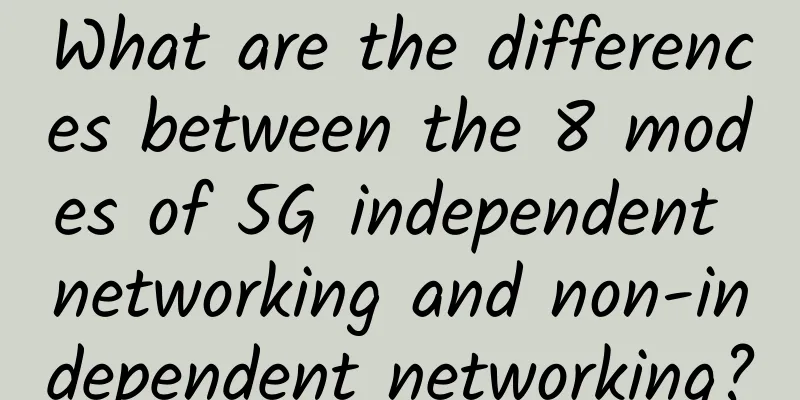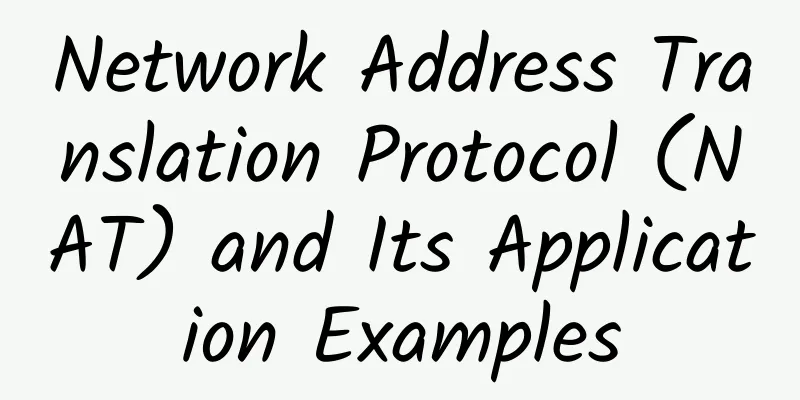What are the differences between the 8 modes of 5G independent networking and non-independent networking?

|
5G is the fifth generation of communication technology. Compared with the previous four generations of communication technology, 5G is not only used in mobile communication technology, but also in the Internet of Things. It mainly includes three application scenarios: eMBB (enhanced Mobile Broadban), mMTC (massive Machine Type Communications) and URLLC (Ultra-Reliable and Low Latency Communications). Among them, mMTC includes eMTC (enhanced Machine Type Communications) and NB-IoT (Narrow Band Internet of Things).
Both eMTC and NB-IoT belong to the LWPA (Low Power Wide Area) technology in the 3GPP standard. They both compete and complement each other. There are many similarities between the two in terms of standardization process, industry development, and existing network applications, but at the same time, there are some differences between the two in terms of mobility, speed, and cost. If you have high requirements for voice, mobility, speed, etc., you can choose eMTC technology. If you do not have high requirements for these, but have high requirements for cost and coverage, you can choose NB-IoT technology. To realize the application of 5G, we first need to build and deploy the 5G network. The deployment of the 5G network mainly requires two parts: the Radio Access Network (RAN) and the Core Network. The Radio Access Network is mainly composed of base stations, which provide users with wireless access functions. The core network mainly provides users with Internet access services and corresponding management functions. Due to the huge investment in deploying a new network and the need to deploy these two parts separately, 3GPP (3rd Generation Partnership Project, a standardization organization) has divided the deployment into two methods: SA (Standalone) and NSA (Non-Standalone). Standalone networking refers to the construction of an existing network, including new base stations, backhaul links and core networks. Non-standalone networking refers to the use of existing 4G infrastructure to deploy 5G networks. In the standard formulated in June 2016, 3GPP listed eight 5G architecture options, including Option 1, Option 2, Option 3/3a, Option 4/4a, Option 5, Option 6, Option 7/7a, and Option 8/8a. Among them, Option 1, Option 2, Option 5, and Option 6 belong to independent networking modes, and the rest belong to non-independent networking modes. In the version released in March 2017, five 5G architecture options were selected (and two sub-options 3x and 7x were added at the same time), namely Option 2, Option 3/3a/3x, Option 4/4a, Option 5, and Option 7/7a/7x. The remaining two options for independent networking are Option 2 and Option 5. The following describes how to deploy the network in each mode. Option 1 and Option 2 What are the differences between the eight 5G independent and non-independent networking methods? Option 1 is the current deployment method of the 4G network, which consists of the 4G core network and base stations. The solid line is called the user plane, which represents the transmitted data, and the dotted line is called the control plane, which represents the commands for transmitting management and scheduling data. Option 2 belongs to 5G independent networking, which uses 5G base stations and 5G core networks, with better service quality, but the cost is also high. Option 3 What are the differences between the eight ways of 5G independent networking and non-independent networking? Option 3 mainly uses the 4G core network, which is divided into master and slave. The base station that transmits control plane commands with the core network is the master. Due to the limited data processing capacity of traditional 4G base stations, it is necessary to upgrade the hardware of the base station and transform it into an enhanced 4G base station. This base station is the master, and the newly deployed 5G base station is used as a slave. At the same time, since some 4G base stations are old, operators are unwilling to spend money to renovate the base stations, so they have come up with two other solutions, option 3a and option 3x. Option 3a is to directly transmit 5G user plane data to the 4G core network. Option 3x is to divide the user plane data into two parts, using 5G base stations to transmit the part of the data that cannot be transmitted by the 4G base station, and still using 4G base stations to transmit the remaining data. The control plane commands of both are still transmitted by the 4G base station. Option 4 What are the differences between the eight ways of 5G independent networking and non-independent networking? The difference between option 4 and option 3 is that the 4G base station and 5G base station in option 4 share the 5G core network, with the 5G base station as the master station and the 4G base station as the slave station. Since the 5G base station has the functions of a 4G base station, the user plane and control plane of the 4G base station in option 4 are transmitted to the 5G core network through the 5G base station respectively, while in option 4a, the user plane of the 4G base station is directly connected to the 5G core network, and the control plane is still transmitted from the 5G base station to the 5G core network. Option 5 and Option 6 What are the differences between the eight ways of 5G independent networking and non-independent networking? Option 5 can be understood as deploying the 5G core network first and implementing the functions of the 4G core network in the 5G core network, using enhanced 4G base stations first and then gradually deploying 5G base stations. Option 6 is to deploy 5G base stations first and use the 4G core network. However, this option will limit some functions of the 5G system, such as network slicing, so Option 6 has been abandoned. Option 7 What are the differences between the eight modes of 5G independent networking and non-independent networking? Option 7 is similar to option 3. The biggest difference is that the 4G core network in option 3 is changed to a 5G core network. The transmission method is the same. Option 8 What are the differences between the eight modes of 5G independent networking and non-independent networking? Options 8 and 8a use the 4G core network and use 5G base stations to transmit control plane commands and user plane data to the 4G core network. Since the 4G core network needs to be upgraded and reconstructed, the cost is higher and the transformation is more complicated, so this option was abandoned in the version released in March 2017 and will not be introduced further here. In December 2017, the first version of the 5G non-standalone (NSA) standard was officially frozen. In June 2018, 5G standalone (NA) has achieved partial functional freezing, and the overall standard is expected to be frozen in the third quarter. However, the existing versions focus more on mobile bandwidth and high-reliability and low-latency applications. More application scenarios and standards of 5G have not yet been defined. It is expected that the 5G standard will be fully formulated by the end of 2019. In order to avoid high investment in the short term, each operator will choose different deployment methods according to their actual situation. |
>>: When will the price of NB-IoT modules drop below 20 yuan?
Recommend
Regarding "computing power", this article is worth reading
In today’s article, let’s talk about computing po...
Germany approves Huawei 5G, says it will remain open to competing technologies
After successively losing important markets such ...
Accelerating digital transformation, 5G empowers the next generation of new industrial manufacturing
[[335662]] The COVID-19 pandemic has imposed mand...
The successful commercialization of NB-IoT is not achieved overnight
According to media reports, the Ministry of Indus...
China and the United States compete in autonomous driving, 5G may become the "decisive factor"!
With the rise of autonomous driving technology an...
August of the three major operators: 5G is accelerating, and China Mobile's fixed-line broadband users have exceeded 200 million
2020 was a difficult year, but it went by very qu...
The three major operators made 457 million yuan a day in the first three quarters! How much did you contribute?
On the evening of the 22nd, China Telecom disclos...
5G keeps refreshing the timetable and the three major operators have finalized the roadmap!
5G has been constantly updating its timetable rec...
Addressing the risk of permanent roaming through network localization
Over the past few years, operators and regulators...
Experts gather between REST, gRPC and GraphQL!
REST, GraphQL, and gRPC are the three most common...
What is Zigbee and why is it important for your smart home?
Zigbee is a widely used smart home protocol that’...
Dapr Practice in Alibaba Cloud Native
What is Service Mesh? Since 2010, SOA architectur...
Five-year action plan for new infrastructure in the transportation sector released
As one of the main driving forces of urban develo...
If you want AI, come to Chongqing Smart Expo! Huawei brings two "magic weapons" to in-depth exchanges on the intelligent industry
[51CTO.com original article] On August 23, the th...
Technology trends 2024: The impact of AI, 5G, IoT and blockchain
As 2024 begins, many technology trends are taking...









